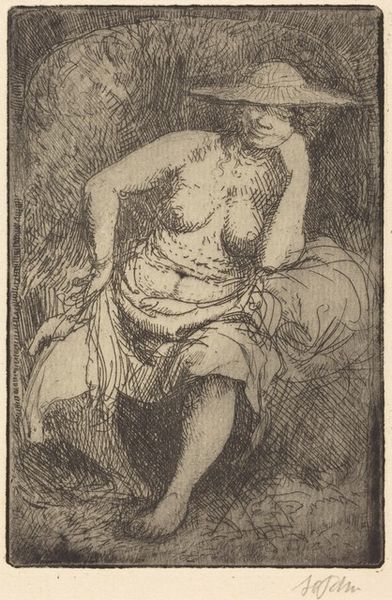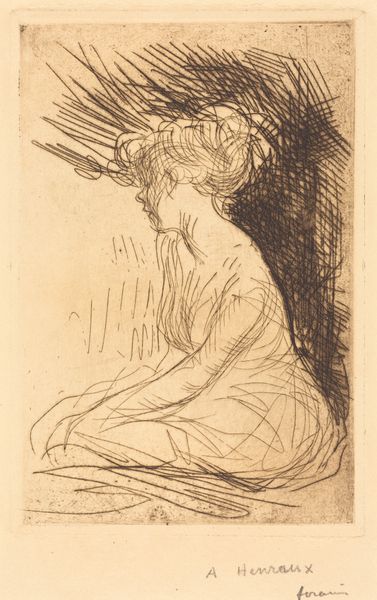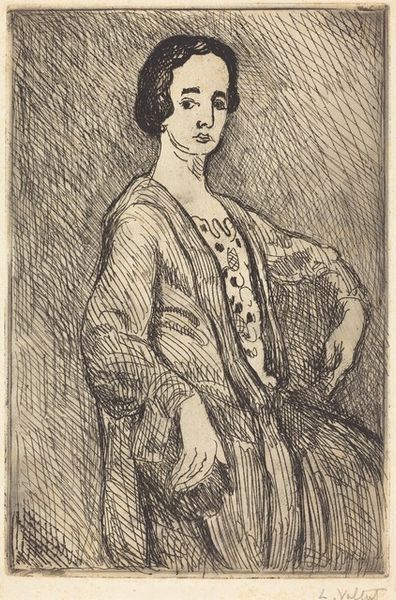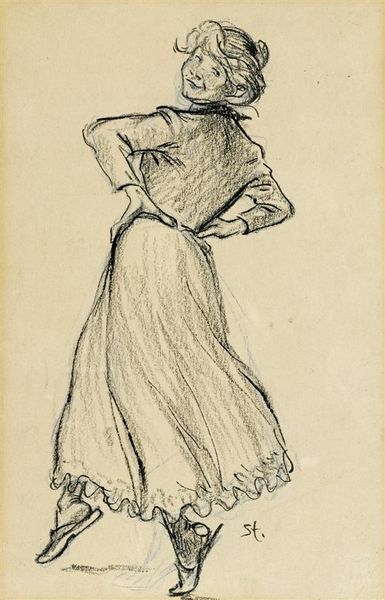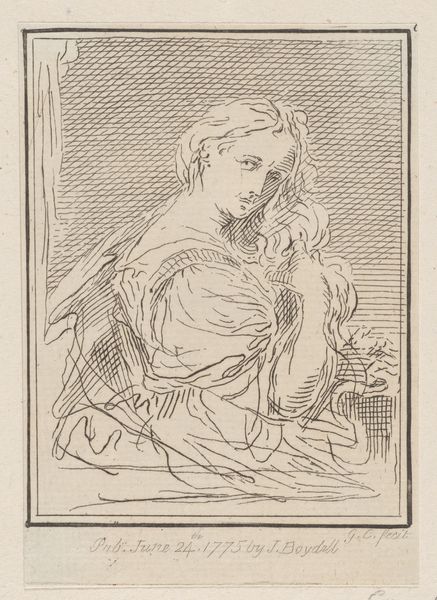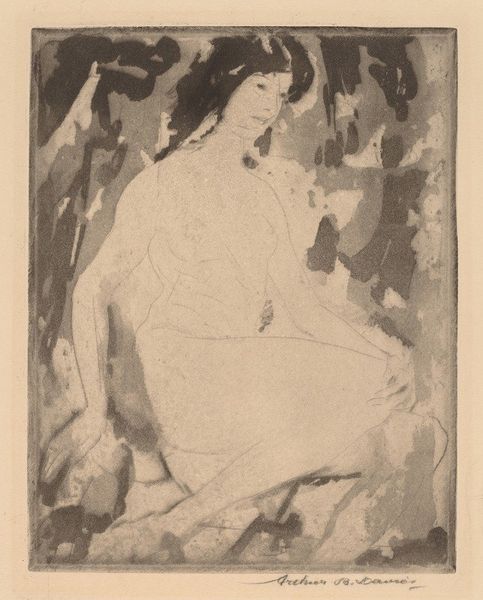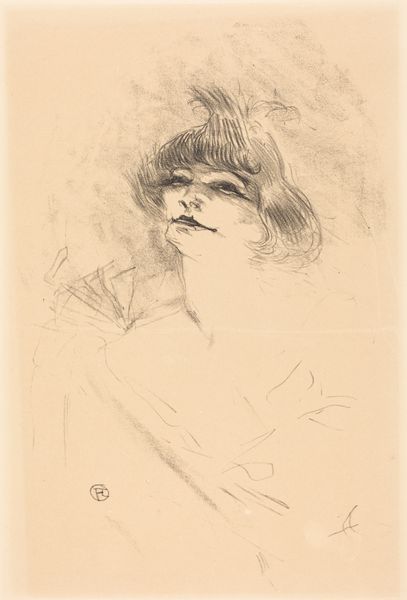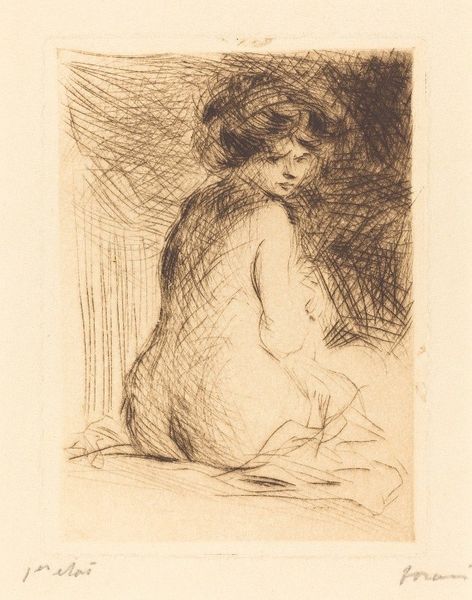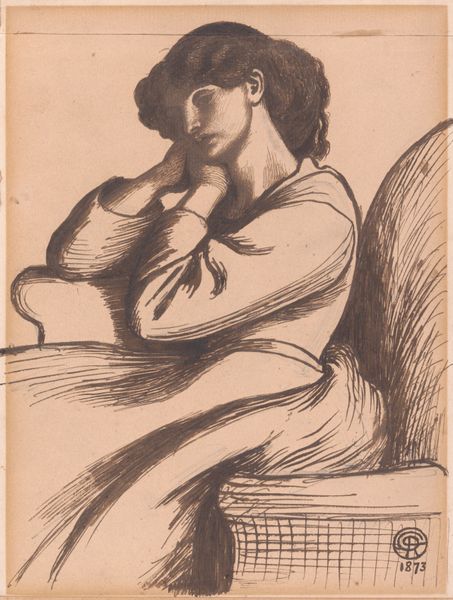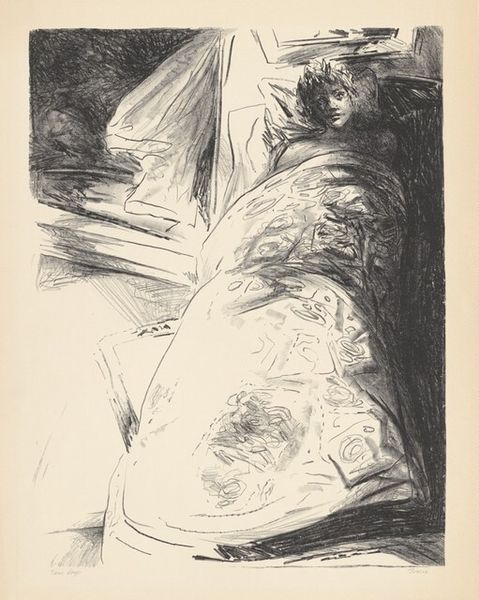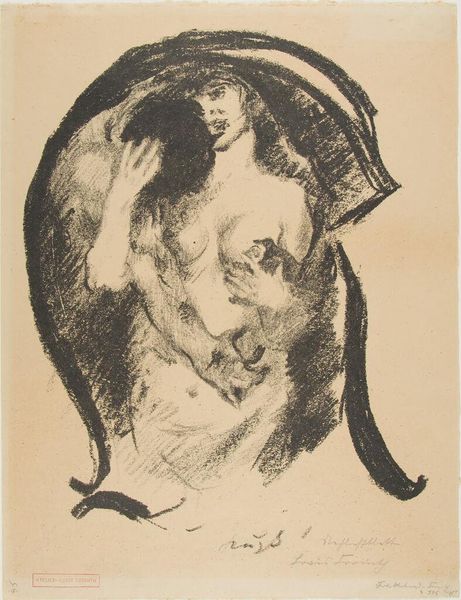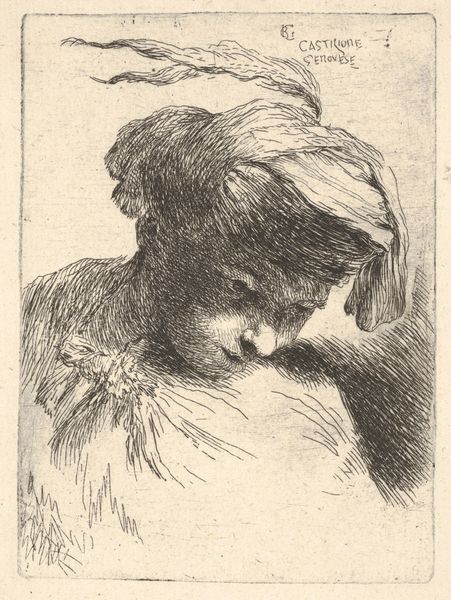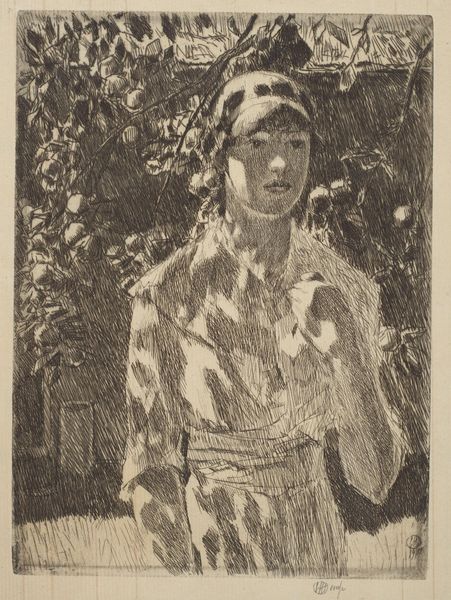
drawing, print, etching
#
portrait
#
drawing
# print
#
impressionism
#
etching
#
figuration
Dimensions: plate: 17 x 11.5 cm (6 11/16 x 4 1/2 in.) sheet: 31.4 x 24.5 cm (12 3/8 x 9 5/8 in.)
Copyright: National Gallery of Art: CC0 1.0
Louis Valtat made this etching, "Seated Woman," using a metal plate, likely copper or zinc, and paper. The process of etching begins with covering the plate with a waxy, acid-resistant ground. Valtat would have then used a needle to draw through this ground, exposing the metal underneath. Immersing the plate in acid would bite away the exposed lines, creating grooves. The deeper the bite, the darker the line would appear in the final print. After removing the ground, Valtat would have inked the plate, wiping away excess so ink remained only in the etched lines. Pressing the paper against the inked plate transfers the image, resulting in the print we see. The fine lines and cross-hatching create a sense of depth and shadow, giving the figure volume and texture. Though seemingly simple, etching demands careful planning and execution, a blend of technical skill and artistic vision. Paying attention to the materials and making helps us appreciate not only the final image, but also the artist’s labor and the rich history of printmaking.
Comments
No comments
Be the first to comment and join the conversation on the ultimate creative platform.
